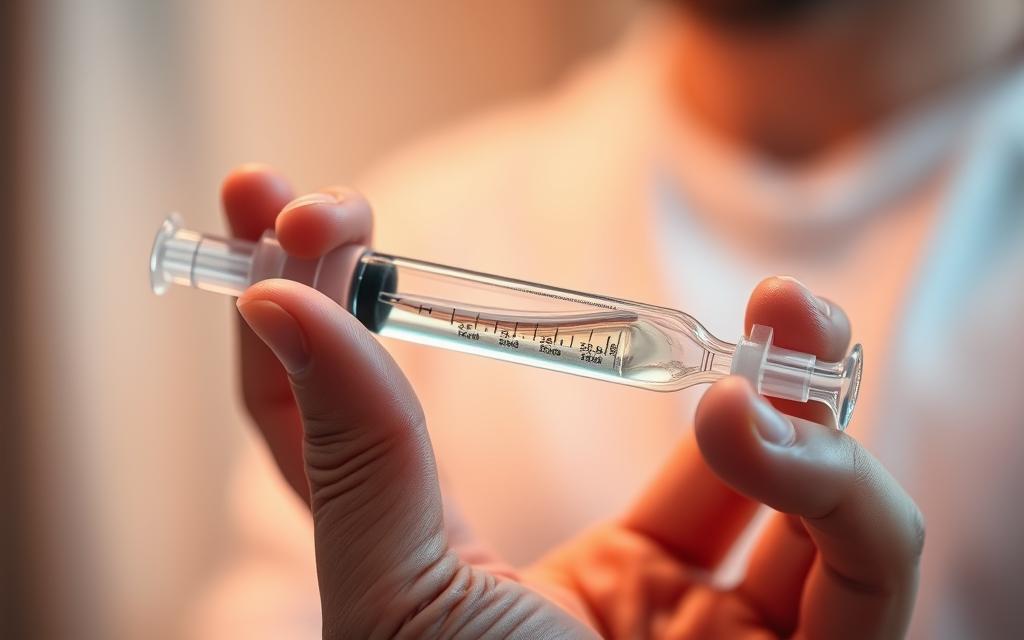Does Platelet Rich Plasma (PRP) Work for Erectile Dysfunction? Benefits & Insights
Platelet Rich Plasma (PRP) therapy has emerged as a promising treatment for various medical conditions, including Erectile Dysfunction (ED). This innovative therapy involves using a patient’s own platelet-rich plasma to stimulate healing and regeneration.
Men seeking effective ED treatment options are increasingly turning to PRP therapy due to its potential benefits, such as improved tissue repair and enhanced blood flow. By exploring the insights and benefits of PRP therapy for Erectile Dysfunction, individuals can make informed decisions about their treatment options.
The potential of PRP therapy to address the underlying causes of ED makes it an exciting area of research and treatment. As we delve into the details, it becomes clear that understanding the role of Platelet Rich Plasma in treating Erectile Dysfunction is crucial for those seeking alternative solutions.
Understanding Platelet Rich Plasma (PRP) Therapy for Erectile Dysfunction
For men struggling with erectile dysfunction, Platelet Rich Plasma (PRP) therapy presents a novel approach that leverages the body’s own healing processes. This treatment involves using the patient’s own platelets to stimulate cellular regeneration, potentially restoring sexual function.

What is PRP and How Does It Work?
PRP therapy involves extracting a patient’s blood, processing it to concentrate the platelets, and then injecting this platelet-rich plasma into the affected area. The growth factors present in PRP are believed to stimulate the repair and regeneration of tissues, which can lead to improved erectile function. This method is considered minimally invasive and has been used in various medical fields, including orthopedics and dermatology, before being applied to sexual health.
The Science Behind PRP for Sexual Health
The science behind PRP therapy for sexual health is based on the regenerative properties of platelets. By promoting tissue repair and angiogenesis (the formation of new blood vessels), PRP can potentially improve erectile function in men suffering from ED. Research and clinical trials are ongoing to fully understand the mechanisms and efficacy of PRP therapy for this condition.
How PRP Differs from Other ED Treatments
Unlike traditional ED treatments such as oral medications (e.g., Viagra) or penile implants, PRP therapy aims to address the underlying causes of erectile dysfunction by promoting tissue regeneration. This can potentially offer a more sustainable solution for some patients, reducing reliance on continuous medication.
The Effectiveness of PRP for Treating Erectile Dysfunction
The quest for effective treatments for erectile dysfunction (ED) has led to the exploration of innovative therapies, including Platelet Rich Plasma (PRP) therapy. As a result, understanding the effectiveness of PRP in treating ED is crucial for both medical professionals and individuals seeking relief.
Clinical Studies and Research Findings
Several clinical studies have investigated the efficacy of PRP therapy for ED, with promising results. Research findings suggest that PRP can improve erectile function by enhancing blood flow and promoting tissue regeneration. For instance, a study published in the Journal of Urology found significant improvements in erectile function among participants treated with PRP.
Success Rates and Patient Outcomes
Analyzing patient outcomes is essential to understanding the real-world effectiveness of PRP therapy for ED. While results vary, many patients report improved erectile function and overall satisfaction with the treatment. Success rates are influenced by factors such as the severity of ED, patient health, and treatment protocols.
Factors That Influence Treatment Success
The success of PRP therapy for ED is contingent upon several factors, including the underlying cause of ED, patient age, and overall health. Additionally, the technique used for PRP administration and the number of treatment sessions can impact outcomes. Understanding these factors is crucial for optimizing treatment protocols and improving ED treatment success rates.
By examining clinical studies, patient outcomes, and influencing factors, it becomes clear that PRP therapy holds potential as a treatment for erectile dysfunction. Continued research and personalized treatment approaches will be key to maximizing its effectiveness.
Benefits and Risks of PRP Therapy for ED
PRP therapy has emerged as a promising treatment for erectile dysfunction, but like any medical treatment, it comes with its benefits and risks. As men consider this innovative therapy, understanding its potential advantages and drawbacks is essential for making an informed decision.
Potential Benefits of PRP for Sexual Function
PRP therapy offers several potential benefits for sexual function, including improved erectile function, increased libido, and enhanced overall sexual satisfaction. By stimulating the body’s natural healing processes, PRP therapy can help restore the health and function of erectile tissues.
The potential benefits of PRP therapy for erectile dysfunction are multifaceted. Some of the key advantages include:
- Improved erectile function
- Increased libido
- Enhanced overall sexual satisfaction
- Minimally invasive procedure
- Low risk of complications

Possible Side Effects and Complications
While PRP therapy is generally considered safe, there are potential risks and side effects to be aware of. These may include temporary pain, swelling, or bruising at the injection site, as well as more serious complications such as infection or nerve damage.
| Possible Side Effects | Complications |
|---|---|
| Temporary pain | Infection |
| Swelling | Nerve damage |
| Bruising | Permanent damage to erectile tissues |
Who Is an Ideal Candidate for PRP Therapy?
Not all men with erectile dysfunction are ideal candidates for PRP therapy. ED treatment candidates typically include those who have not responded to other treatments, such as oral medications or lifestyle changes. Additionally, men with underlying medical conditions, such as diabetes or vascular disease, may benefit from PRP therapy.
To determine if PRP therapy is right for you, it’s essential to consult with a qualified healthcare professional who can assess your individual needs and health status.
Does Atomoxetine Cause Erectile Dysfunction? Medication Effects vs. PRP
When considering treatment options for erectile dysfunction, it’s essential to understand how medications like atomoxetine impact sexual health. Atomoxetine is primarily prescribed for attention deficit hyperactivity disorder (ADHD), but its effects on erectile function have raised concerns among patients and healthcare providers.
Understanding Atomoxetine’s Impact on Sexual Function
Atomoxetine works by selectively inhibiting the reuptake of norepinephrine, a neurotransmitter involved in attention and impulse control. However, this mechanism can also influence other physiological processes, including sexual function. Research suggests that atomoxetine may contribute to erectile dysfunction in some individuals, although the exact prevalence and underlying mechanisms are not fully understood.
Key factors to consider:
- The dosage and duration of atomoxetine treatment
- Individual differences in response to the medication
- Pre-existing conditions that may affect erectile function
How Common Medications Contribute to ED
Various medications, including antidepressants, antihypertensives, and certain psychiatric medications, have been linked to erectile dysfunction. Atomoxetine is among these, potentially affecting erectile function through its impact on neurotransmitter levels and vascular health. Understanding the role of medication in ED is crucial for developing effective treatment strategies.
It’s also important to recognize that medication-induced ED can often be managed or reversed by adjusting the treatment regimen or exploring alternative therapies.
When to Consider PRP as an Alternative to Medications
For individuals experiencing medication-induced erectile dysfunction, Platelet Rich Plasma (PRP) therapy may offer a viable alternative. PRP involves injecting platelet-rich plasma derived from the patient’s own blood into the penile tissue to stimulate healing and improve erectile function. This approach is particularly appealing for those seeking to avoid or minimize the use of pharmaceuticals.
PRP therapy is considered when:
- Medication side effects are significant or unbearable
- Underlying health conditions limit the use of certain medications
- Patients prefer a more natural or minimally invasive treatment option
Conclusion: Making an Informed Decision About PRP for Erectile Dysfunction
As we’ve explored the potential of Platelet Rich Plasma (PRP) therapy for erectile dysfunction, it’s clear that this treatment offers a promising alternative for those seeking to improve their sexual health. By understanding the benefits and risks associated with PRP for ED, individuals can make an informed decision about whether this therapy is right for them.
PRP therapy has shown potential in clinical studies, with some men experiencing improved erectile function. However, it’s essential to consider the potential risks and side effects, as well as individual factors that may influence treatment success. Consulting with a healthcare professional is crucial in determining the best course of treatment for specific needs.
When evaluating ED treatment options, it’s essential to weigh the potential benefits and risks of each approach. By doing so, individuals can make an informed decision that aligns with their unique needs and health goals. PRP for ED is just one of several treatment options available, and a healthcare professional can help determine the most suitable choice.
